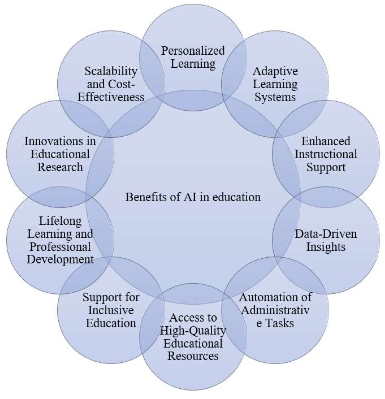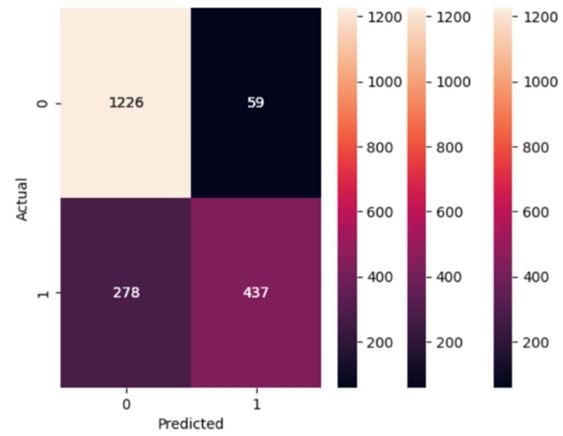Technology-enhanced learning in medical education in the age of artificial intelligence
Abstract
This paper explores the transformative role of artificial intelligence (AI) in medical education, emphasizing its role as a pedagogical tool for technology-enhanced learning. This highlights AI’s potential to enhance the learning process in various inquiry-based learning strategies and support Competency-Based Medical Education (CBME) by generating high-quality assessment items with automated and personalized feedback, analyzing data from both human supervisors and AI, and helping predict the future professional behavior of the current trainees. It also addresses the inherent challenges and limitations of using AI in student assessment, calling for guidelines to ensure its valid and ethical use. Furthermore, the integration of AI into virtual patient (VP) technology to offer experiences in patient encounters significantly enhances interactivity and realism by overcoming limitations in conventional VPs. Although incorporating chatbots into VPs is promising, further research is warranted to enhance their generalizability across various clinical scenarios. The paper also discusses the preferences of Generation Z learners and suggests a conceptual framework on how to integrate AI into teaching and supporting their learning, aligning with the needs of today’s students by utilizing the adaptive capabilities of AI. Overall, this paper highlights areas of medical education where AI can play pivotal roles to overcome educational challenges and offers perspectives on future developments where AI can play a transformative role in medical education. It also calls for future research to advance the theory and practice of utilizing AI tools to innovate educational practices tailored to the needs of today’s students and to understand the long-term impacts of AI-driven learning environments.
References
[1]Ellaway RH. Technology-enhanced learning. In: Swanwick T, Forrest K, O'Brien BC (editors). Understanding medical education: evidence, theory, and practice, 3rd ed. Oxford, UK: Wiley Blackwell; 2019. pp. 139-149.
[2]Cook DA, Ellaway RH. Evaluating technology-enhanced learning: A comprehensive framework. Medical Teacher. 2015; 37(10): 961-970. doi: 10.3109/0142159x.2015.1009024
[3]Farahani MS, Ghasmi G. Artificial Intelligence in education: A comprehensive study. Forum for Education Studies. 2024; 2(3): 1379. doi: 10.59400/fes.v2i3.1379
[4]Nagi F, Salih R, Alzubaidi M, et al. Applications of Artificial Intelligence (AI) in Medical Education: A Scoping Review. Healthcare Transformation with Informatics and Artificial Intelligence. 2023. doi: 10.3233/shti230581
[5]Gordon M, Daniel M, Ajiboye A, et al. A scoping review of artificial intelligence in medical education: BEME Guide No. 84. Medical Teacher. 2024; 46(4): 446-470. doi: 10.1080/0142159x.2024.2314198
[6]Palmer MS. Is generative AI a general purpose pedagogical innovation? Available online: https://www.insidehighered.com/opinion/views/2024/11/25/understanding-generative-ai-pedagogical-innovation-opinion (accessed on 11 December 2024).
[7]Weidener L, Fischer M. Artificial intelligence teaching as part of medical education: Qualitative analysis of expert interviews. JMIR Medical Education. 2023; 9: e46428. doi: 10.2196/46428
[8]Masters K, Herrmann-Werner A, Festl-Wietek T, et al. Preparing for Artificial General Intelligence (AGI) in health professions education: AMEE Guide No. 172. Medical Teacher. 2024; 46(10): 1258-1271. doi: 10.1080/0142159x.2024.2387802
[9]Stretton B, Kovoor J, Arnold M, et al. ChatGPT-based learning: Generative artificial intelligence in medical education. Medical Science Educator. 2023; 34(1): 215-217. doi: 10.1007/s40670-023-01934-5
[10]Divito CB, Katchikian BM, Gruenwald JE, et al. The tools of the future are the challenges of today: The use of ChatGPT in problem-based learning medical education. Medical Teacher. 2023; 46(3): 320-322. doi: 10.1080/0142159x.2023.2290997
[11]Hui Z, Zewu Z, Jiao H, et al. Application of ChatGPT-assisted problem-based learning teaching method in clinical medical education. BMC Medical Education. 2025; 25(1). doi: 10.1186/s12909-024-06321-1
[12]Jiang Y, Fu X, Wang J, et al. Enhancing medical education with chatbots: A randomized controlled trial on standardized patients for colorectal cancer. BMC Medical Education. 2024; 24(1). doi: 10.1186/s12909-024-06530-8
[13]Rezigalla AA. AI in medical education: Uses of AI in construction type A MCQs. BMC Medical Education. 2024; 24(1). doi: 10.1186/s12909-024-05250-3
[14]Bigdeli S, Movahed MS, Sandars J. Technology-enhanced learning in medical education. In: Zaidi SH, Hassan S, Bigdeli S, Zehra T (editors). Global medical education in normal and challenging times. Springer; 2024. pp. 183-190.
[15]Hwang JY. Potential effects of ChatGPT as a learning tool through students’ experiences. Medical Teacher. 2023; 46(2): 291-291. doi: 10.1080/0142159x.2023.2259068
[16]Sami A, Tanveer F, Sajwani K, et al. Medical students’ attitudes toward AI in education: Perception, effectiveness, and its credibility. BMC Medical Education. 2025; 25(1). doi: 10.1186/s12909-025-06704-y
[17]Feigerlova E, Hani H, Hothersall-Davies E. A systematic review of the impact of artificial intelligence on educational outcomes in health professions education. BMC Medical Education. 2025; 25(1). doi: 10.1186/s12909-025-06719-5
[18]Zhang W, Cai M, Lee HJ, et al. AI in Medical Education: Global situation, effects and challenges. Education and Information Technologies. 2023; 29(4): 4611-4633. doi: 10.1007/s10639-023-12009-8
[19]Frank JR, Snell LS, Cate OT, et al. Competency-based medical education: theory to practice. Medical Teacher. 2010; 32(8): 638-645. doi: 10.3109/0142159x.2010.501190
[20]Masters K, MacNeil H, Benjamin J, et al. Artificial intelligence in health professions education assessment: AMEE Guide No. 178. Medical Teacher. 2025: 1-15. doi: 10.1080/0142159x.2024.2445037
[21]Dabbagh A, Madadi F, Larijani B. Role of AI in competency-based medical education: Using EPA as the magicbox. Archives of Iranian Medicine. 2024; 27(11): 633-635. doi: 10.34172/aim.31795
[22]Kung TH, Cheatham M, Medenilla A, et al. Performance of ChatGPT on USMLE: Potential for AI-assisted medical education using large language models. PLOS Digital Health. 2023; 2(2): e0000198. doi: 10.1371/journal.pdig.0000198
[23]Mihalache A, Huang RS, Popovic MM, et al. ChatGPT-4: An assessment of an upgraded artificial intelligence chatbot in the United States Medical Licensing Examination. Medical Teacher. 2023; 46(3): 366-372. doi: 10.1080/0142159x.2023.2249588
[24]Liu M, Okuhara T, Chang X, et al. Performance of ChatGPT across different versions in medical licensing examinations worldwide: Systematic review and meta-analysis. Journal of Medical Internet Research. 2024; 26: e60807. doi: 10.2196/60807
[25]Kıyak YS, Kononowicz AA. Case-based MCQ generator: A custom ChatGPT based on published prompts in the literature for automatic item generation. Medical Teacher. 2024; 46(8): 1018-1020. doi: 10.1080/0142159x.2024.2314723
[26]Indran IR, Paranthaman P, Gupta N, et al. Twelve tips to leverage AI for efficient and effective medical question generation: A guide for educators using Chat GPT. Medical Teacher. 2023; 46(8): 1021-1026. doi: 10.1080/0142159x.2023.2294703
[27]Sridharan K, Sequeira RP. Artificial intelligence and medical education: application in classroom instruction and student assessment using a pharmacology & therapeutics case study. BMC Medical Education. 2024; 24(1). doi: 10.1186/s12909-024-05365-7
[28]Teckwani SH, Wong AHP, Luke NV, et al. Accuracy and reliability of large language models in assessing learning outcomes achievement across cognitive domains. Advances in Physiology Education. 2024; 48(4): 904-914. doi: 10.1152/advan.00137.2024
[29]Law AK, So J, Lui CT, et al. AI versus human-generated multiple-choice questions for medical education: A cohort study in a high-stakes examination. BMC Medical Education. 2025; 25(1). doi: 10.1186/s12909-025-06796-6
[30]Yilmaz Y, Jurado Nunez A, Ariaeinejad A, et al. Harnessing natural language processing to support decisions around workplace-based assessment: Machine learning study of competency-based medical education. JMIR Medical Education. 2022; 8(2): e30537. doi: 10.2196/30537
[31]Samuel A, Soh M, Jung E. Enhancing reflective practice with ChatGPT: A new approach to assignment design. Medical Teacher. 2025: 1-3. doi: 10.1080/0142159x.2025.2461534
[32]Johnsson V, Søndergaard MB, Kulasegaram K, et al. Validity evidence supporting clinical skills assessment by artificial intelligence compared with trained clinician raters. Medical Education. 2023; 58(1): 105-117. doi: 10.1111/medu.15190
[33]Cook DA, Triola MM. Virtual patients: A critical literature review and proposed next steps. Medical Education. 2009; 43(4): 303-311. doi: 10.1111/j.1365-2923.2008.03286.x
[34]Quail NPA, Boyle JG. Virtual patients in health professions education. In: Rea P (editor). Biomedical visualisation. Springer, Cham; 2019.
[35]Plackett R, Kassianos AP, Mylan S, et al. The effectiveness of using virtual patient educational tools to improve medical students’ clinical reasoning skills: A systematic review. BMC Medical Education. 2022; 22(1). doi: 10.1186/s12909-022-03410-x
[36]Berman NB, Durning SJ, Fischer MR, et al. the role for virtual patients in the future of medical education. Academic Medicine. 2016; 91(9): 1217-1222. doi: 10.1097/acm.0000000000001146
[37]Cartledge S, Ward D, Stack R, et al. Adaptations in clinical examinations of medical students in response to the COVID-19 pandemic: A systematic review. BMC Medical Education. 2022; 22(1). doi: 10.1186/s12909-022-03662-7
[38]Keifenheim KE, Teufel M, Ip J, et al. Teaching history taking to medical students: A systematic review. BMC Medical Education. 2015; 15(1). doi: 10.1186/s12909-015-0443-x
[39]Reiswich A, Haag M. Evaluation of chatbot prototypes for taking the virtual patient's history. Studies in health technology and informatics. 2019; 260: 73-80.
[40]Cook DA. Creating virtual patients using large language models: Scalable, global, and low cost. Medical Teacher. 2024; 47(1): 40-42. doi: 10.1080/0142159x.2024.2376879
[41]Holderried F, Stegemann–Philipps C, Herschbach L, et al. A Generative Pretrained Transformer (GPT)–powered chatbot as a simulated patient to practice history taking: Prospective, mixed methods study. JMIR Medical Education. 2024; 10: e53961. doi: 10.2196/53961
[42]Holderried F, Stegemann-Philipps C, Herrmann-Werner A, et al. A language model–powered simulated patient with automated feedback for history taking: Prospective study. JMIR Medical Education. 2024; 10: e59213. doi: 10.2196/59213
[43]Frangoudes F, Hadjiaros M, Schiza E, et al. An overview of the use of chatbots in medical and healthcare education. In: Zaphiris P, Ioannou A (editors). Learning and collaboration technologies: Games and virtual environments for learning. Springer; 2021.
[44]Kim KJ. Medical student needs for e-learning: Perspectives of the generation Z. Korean Journal of Medical Education. 2024; 36(4): 389-399. doi: 10.3946/kjme.2024.312
[45]Chardonnens S. Adapting educational practices for Generation Z: Integrating metacognitive strategies and artificial intelligence. Frontiers in Education. 2025; 10. doi: 10.3389/feduc.2025.1504726
[46]Seemiller C, Grace M. Generation Z: Educating and engaging the next generation of students. About Campus: Enriching the Student Learning Experience. 2017; 22(3): 21-26. doi: 10.1002/abc.21293
[47]Lerchenfeldt S, Attardi SM, Pratt RL, et al. Twelve tips for interfacing with the new generation of medical students: iGen. Medical Teacher. 2020; 43(11): 1249-1254. doi: 10.1080/0142159x.2020.1845305
[48]Bowen JA, Watson EC. Teaching with AI: A practical guide to a new era of human learning. Baltimore, MD: Johns Hopkins University Press; 2024.
[49]Lucas HC, Upperman JS, Robinson JR. A systematic review of large language models and their implications in medical education. Medical Education. 2024. doi: 10.1111/medu.15402
[50]Kimmons R, Graham CR, West RE. The PICRAT model for technology integration in teacher preparation. Contemporary Issues in Technology and Teacher Education. 2020; 20(1).
Copyright (c) 2025 Author(s)

This work is licensed under a Creative Commons Attribution 4.0 International License.









